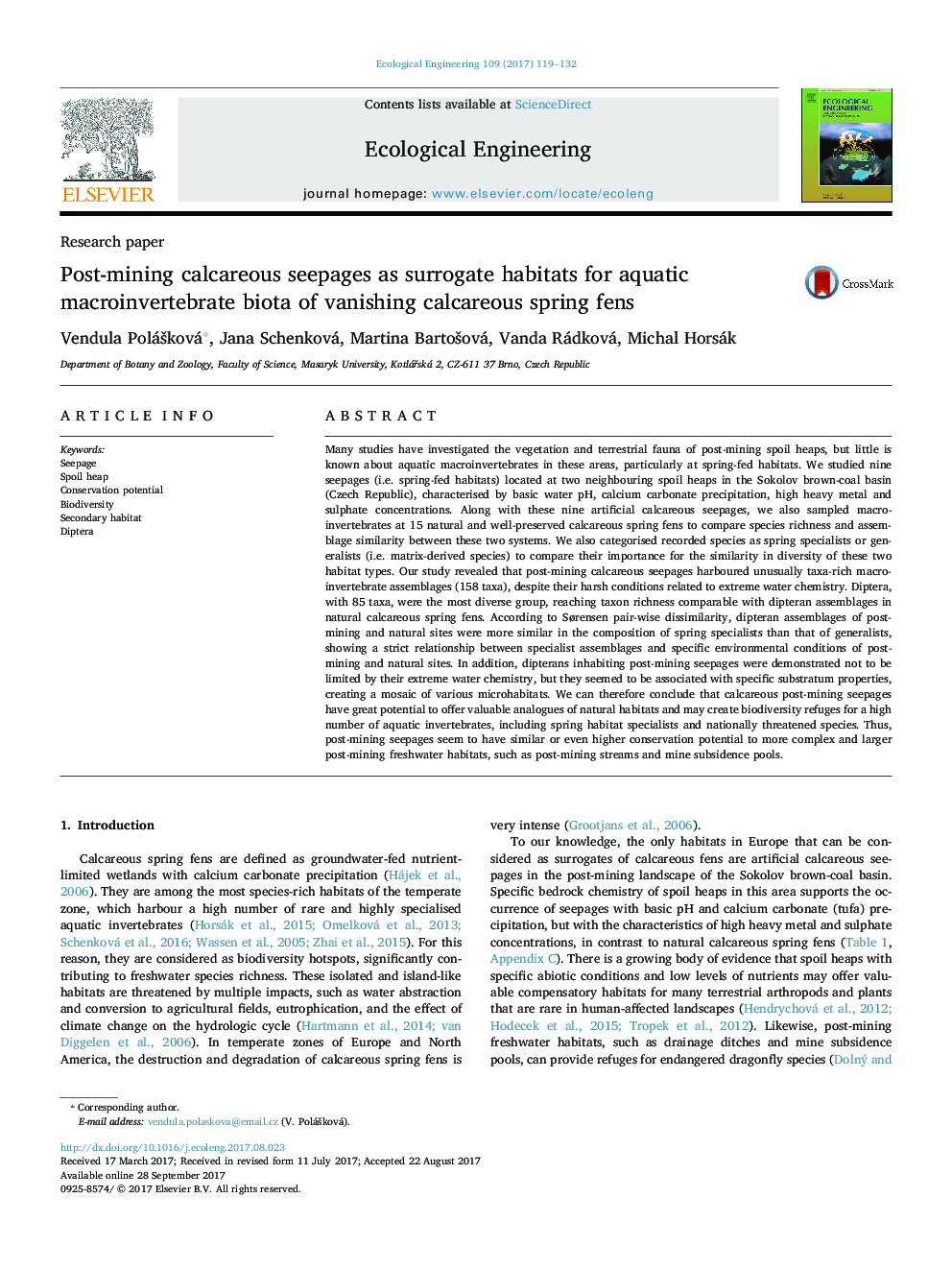| کد مقاله | کد نشریه | سال انتشار | مقاله انگلیسی | نسخه تمام متن |
|---|---|---|---|---|
| 5743650 | 1412317 | 2017 | 14 صفحه PDF | دانلود رایگان |
- Post-mining seepages harboured unusually taxa-rich macroinvertebrate assemblages.
- Assemblages were formed by spring specialists, including threatened species.
- Diptera reached comparable taxon richness to those in natural spring fens.
- Chemical tolerances of some species were found to be broader than previously reported.
- Studied sites are valuable secondary habitats of highly threatened natural fens.
Many studies have investigated the vegetation and terrestrial fauna of post-mining spoil heaps, but little is known about aquatic macroinvertebrates in these areas, particularly at spring-fed habitats. We studied nine seepages (i.e. spring-fed habitats) located at two neighbouring spoil heaps in the Sokolov brown-coal basin (Czech Republic), characterised by basic water pH, calcium carbonate precipitation, high heavy metal and sulphate concentrations. Along with these nine artificial calcareous seepages, we also sampled macroinvertebrates at 15 natural and well-preserved calcareous spring fens to compare species richness and assemblage similarity between these two systems. We also categorised recorded species as spring specialists or generalists (i.e. matrix-derived species) to compare their importance for the similarity in diversity of these two habitat types. Our study revealed that post-mining calcareous seepages harboured unusually taxa-rich macroinvertebrate assemblages (158 taxa), despite their harsh conditions related to extreme water chemistry. Diptera, with 85 taxa, were the most diverse group, reaching taxon richness comparable with dipteran assemblages in natural calcareous spring fens. According to Sørensen pair-wise dissimilarity, dipteran assemblages of post-mining and natural sites were more similar in the composition of spring specialists than that of generalists, showing a strict relationship between specialist assemblages and specific environmental conditions of post-mining and natural sites. In addition, dipterans inhabiting post-mining seepages were demonstrated not to be limited by their extreme water chemistry, but they seemed to be associated with specific substratum properties, creating a mosaic of various microhabitats. We can therefore conclude that calcareous post-mining seepages have great potential to offer valuable analogues of natural habitats and may create biodiversity refuges for a high number of aquatic invertebrates, including spring habitat specialists and nationally threatened species. Thus, post-mining seepages seem to have similar or even higher conservation potential to more complex and larger post-mining freshwater habitats, such as post-mining streams and mine subsidence pools.
Journal: Ecological Engineering - Volume 109, Part A, December 2017, Pages 119-132
